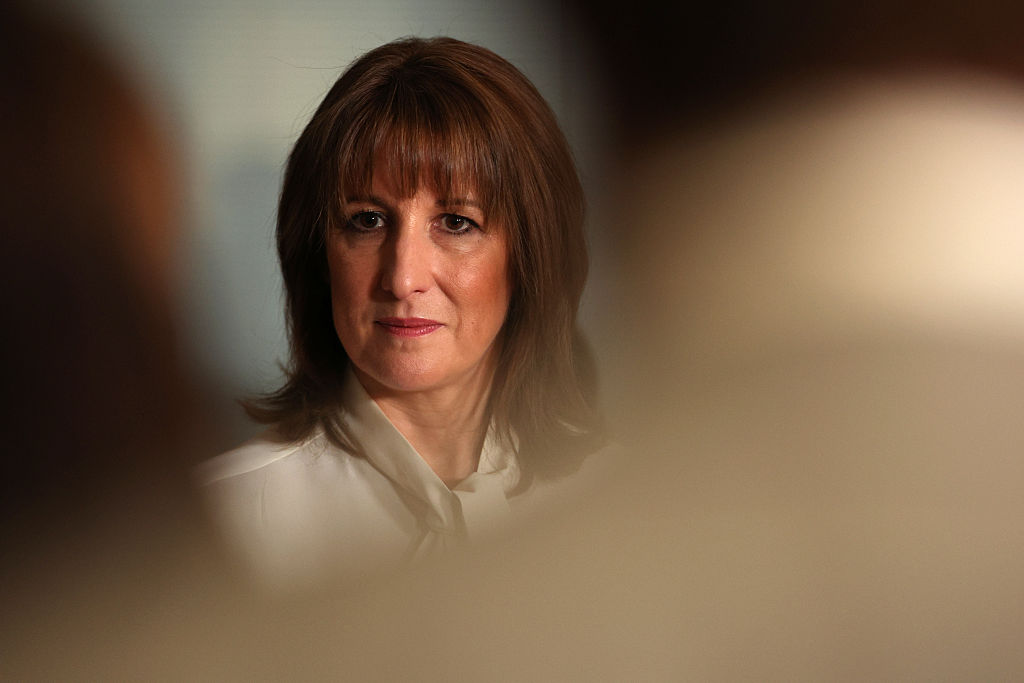How new technology is disrupting the insurance industry
Challenger firms are helping to change the industry, but incumbents will take the rewards, says John Chambers.

No one likes dealing with insurance companies. But imagine one that will pay your claim in seconds rather than weeks or months. This is the promise of Lemonade, the flag carrier of the new insurance technology (insurtech) companies that are trying to disrupt the sleepy and conservative insurance industry. In 2017 Lemonade claimed a new world record for settling a claim in just three seconds.
A New Yorker called Brandon had his $1,000 Canada Goose coat stolen on a freezing January night. So he opened the Lemonade app on his iPhone to report a claim and recorded a minute-long video report stating where he had bought the coat and what had happened. Three seconds after hitting submit, the claim had been agreed by the firm’s anti-fraud algorithm and the cash was in Brandon’s bank account.
He couldn’t believe it – and neither could the worried chief executives of traditional insurance companies in New York and London when the word started to spread. On 2 July 2020, Lemonade had its initial public offering (IPO). The company was backed by highprofile tech investors including SoftBank and Baillie Gifford. By the end of the day the share price had reached over $69, up 139% from the IPO price of $29, prompting market commentators to state that the bankers had woefully underestimated the shake-up that Lemonade and its car-insurance peers Metromile and Root were going to give the old-fashioned insurance market.
MoneyWeek
Subscribe to MoneyWeek today and get your first six magazine issues absolutely FREE

Sign up to Money Morning
Don't miss the latest investment and personal finances news, market analysis, plus money-saving tips with our free twice-daily newsletter
Don't miss the latest investment and personal finances news, market analysis, plus money-saving tips with our free twice-daily newsletter
Lemonade was the new Amazon taking on the tired Barnes & Nobles of the insurance world. By August 2021 the market cap of Lemonade had reached $10bn. Metromile, a pay-as-you-go car insurer for occasional drivers, and Root, which bases its prices on driving data collected from the policyholders, both floated on the US stockmarket shortly afterwards.
Growth is slowing, losses are not
Much has changed in the 20 months since then. The three great disruptors have failed to make the breakthrough that the analyst cheerleaders predicted and all three are now trading at around 80%-90% down from their peak prices. In part this is because “jam tomorrow” tech stocks such as Lemonade are no longer in vogue as investors prefer companies that are profitable today.
But, more importantly, it seems that selling insurance is not as straightforward as selling books, or even providing a banking service to smallbusiness clients. So what has gone wrong and what do the current numbers look like? All three are continuing to grow revenues, but the growth is slowing and they remain an insignificant part of the $1.3trn US insurance market.
Unfortunately, losses are growing at a much faster rate. When an insurer has been underpricing its business it is very difficult to correct this while maintaining growth. Increasing prices drives business away and the young customers of these insurtechs are particularly price sensitive. It is also an industry with limited economies of scale.
The biggest cost is paying claims and this grows proportionately with customer numbers. Lemonade has had to raise additional funds, diluting shareholders and causing the share price to tank.
The concept behind these companies’ business models was to use technology to price insurance risks accurately, understand claims trends and to make it easier to target pricing more effectively to maximise sales.
They look to employ more coders and data scientists than underwriters, claims and call-centre staff. To use the Canada Goose example, if your technology can confirm certain elements of the claim –such as whether the shop where the coat was bought is a registered stockist and whether the price looks right – then you don’t need to employ expensive claims adjusters to handle the claim.
Three fundamental errors
Unfortunately, Lemonade and the others made some fundamental errors in their business models. While it may seem obvious to target tech-savvy millennials, in practice they make poor customers for insurers since they have very little to insure. They are the asset-light generation who rent their accommodation, use Uber and Zipcar instead of owning a vehicle and even rent their music collection from Spotify. Lemonade also decided to have a “zero everything” offer with no rate rises guaranteed and no excess applied on claims. This only encouraged clients to use their policy as a cash machine, claiming for every little scratch. The timing of the launch and expansion of these challengers also coincided with the absolute bottom of the insurance-pricing cycle following several years of pricing declines. To take market share from incumbents meant cutting already depressed pricing still further. Insurance is also a highly regulated industry, especially in the US where pricing needs to be filed and agreed with the state insurance commission.
Finally, selling insurance is not like selling books. Insurance is an intangible product, a promise to pay in the future if something bad happens. For this reason, reputation and brand recognition is more important than for most other industries. Will a start-up with a silly name really be there for you when you need it – when your house has flooded, or when you are taken ill on holiday?
The knowledge that your policy is with a long-established firm helps you sleep at night. If Lemonade and the others had had some more people with experience of the insurance industry in their management teams and on their boards then some of these pitfalls might have been avoided.
Lessons for the industry
The future looks tough for these new insurers. They have had to raise significant additional funds to offset the losses and this has depressed their share prices. In November 2021, Lemonade announced a merger with Metromile, which should complete this year.
This will help it bulk up and diversify its business. However, in many ways this lack of success is a shame, as there is much to learn from these businesses for mainstream insurers. Their marketing and branding are exceptionally slick and the apps and websites very intuitive and easy to navigate. The focus on data analytics, process automation and streamlining of the underwriting process is important.
Traditional insurers are finally now responding to the challenge and increasingly working with tech companies from small start-ups to giants such as Alphabet to help them build sophisticated pricing models to automate much of the underwriting process. These can be linked to big data companies such as Experian and automatically bring in risk data connected with a company name or an address. This can include construction details, flood exposure and local crime statistics, which can all help to evaluate the risk and calculate the required premium. By combining the latest technology with a deep understanding and experience of underwriting these risks, many traditional insurers are now better equipped to take on and beat the new challengers.
Better times for traditional insurers When I last looked at the insurance sector in MoneyWeek at the start of last year I was forecasting better times ahead for traditional insurers. The pricing cycle had turned decisively in their favour and pricing levels have continued to rise at a strong clip (see chart below), with compound rises of around 60% over five years. In contrast to the insurtechs, many of my recommendations have had impressive results. For example, commercial insurance giant AIG (NYSE: AIG) reported a pre-tax profit of $12bn for 2021 versus a $7.3bn loss in Covid-19-affected 2020. The share price has risen some 50% since my tip.
In the UK, the London insurance market remains the pre-eminent global market for commercial insurance of all kinds. It is centred around the Lloyd’s of London marketplace, where some 80 syndicates compete for business. Lloyd’s recently reported a major turnaround in fortunes for the market when it announced an overall profit for 2021 of £2.3bn following a loss-making year in 2020.
Some Lloyd’s syndicates are backed by major global insurers, others by pension funds or private capital and a few are listed on the stock exchange. Of the listed firms Beazley (LSE: BEZ) has also had a significate change in its fortunes with a 2021 profit of £370m following a $50m loss the year before. Its Lloyd’s peer Hiscox (LSE: HSX) had its best result in five years.
Only Lancashire (LSE: LRE) disappointed due to a heavy exposure to catastrophe events last year and investors’ concerns about possible war losses from the Ukraine conflict. My preferred Lloyd’s of London play remains Helios Underwriting (LSE: HUW), which I own.
This company has stakes in several of the best syndicates in the market, has a very diverse portfolio and a long record of outperforming the wider market. It has grown significantly over the past year as it raised funds from institutions such as Polar Capital, which are specialists in the sector. It has used the capital to acquire syndicate capacity from private Lloyd’s investors.
I anticipate insurance sector results to be even stronger in the coming year as the benefit of the higher premiums flows through to the bottom line. If traditional insurers can learn the right lessons from the insurtechs then the outcome could be better still.
Get the latest financial news, insights and expert analysis from our award-winning MoneyWeek team, to help you understand what really matters when it comes to your finances.
-
 Investors will reap long-term rewards from UK equities
Investors will reap long-term rewards from UK equitiesOpinion Nick Train, portfolio manager, Finsbury Growth & Income Trust, highlights three UK equities where he’d put his money
-
 The graphene revolution is progressing slowly but surely
The graphene revolution is progressing slowly but surelyEnthusiasts thought the discovery that graphene, a form of carbon, could be extracted from graphite would change the world. They might've been early, not wrong.
-
 Why pension transfers are so tricky
Why pension transfers are so trickyInvestors could lose out when they do a pension transfer, as the process is fraught with risk and requires advice, says David Prosser
-
 Modern Monetary Theory and the return of magical thinking
Modern Monetary Theory and the return of magical thinkingThe Modern Monetary Theory is back in fashion again. How worried should we be?
-
 The coming collapse in the jobs market
The coming collapse in the jobs marketOpinion Once the Employment Bill becomes law, expect a full-scale collapse in hiring, says Matthew Lynn
-
 How pet insurance can help cut the costs of vet bills
How pet insurance can help cut the costs of vet billsYou can temper the expense of vet bills with pet insurance. There are four main types to consider
-
 Rachel Reeves's punishing rise in business rates will crush the British economy
Rachel Reeves's punishing rise in business rates will crush the British economyOpinion By piling more and more stealth taxes onto businesses, the government is repeating exactly the same mistake of its first Budget, says Matthew Lynn
-
 The consequences of the Autumn Budget – and what it means for the UK economy
The consequences of the Autumn Budget – and what it means for the UK economyOpinion A directionless and floundering government has ducked the hard choices at the Autumn Budget, says Simon Wilson
-
 Big Short investor Michael Burry closes hedge fund Scion Capital
Big Short investor Michael Burry closes hedge fund Scion CapitalProfile Michael Burry rightly bet against the US mortgage market before the 2008 crisis. Now he is worried about the AI boom
-
 Why the Waspi women are wrong
Why the Waspi women are wrongOpinion Compensation for the Waspi women would mean using an unaffordable sledgehammer to crack a nut, says David Prosser